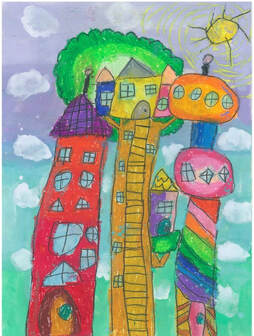 I have a friend who recently began reading lots of fiction. More than once she has mentioned being amazed that authors can weave the stories she is reading. And yet my friend is a wonderful storyteller. Over and over I’ve heard her tell a story—often from her past—that helps make sense of or casts a new light on something we’re discussing. Her stories are more helpful to me than any sets of facts she might recite. I grew up in a storytelling family. I later would learn that we were part of what is often called an oral culture. My sister and I were the first in our large extended family—except for one uncle—who went to college. That doesn’t mean that members of my family weren’t gifted or bright. We simply used different tools to make sense of the world. As I became educated in the literate culture of academia, I still loved and relied on stories. It’s probably no accident that I gravitated to journalism—a field in which I could get paid to write the stories I heard and observed. Later that same love of stories guided me to study narrative theory—especially as it applies to organizations, including congregations.
1 Comment
 There are few things I enjoy more than listening to people tell stories. This past week I had two splendid opportunities to do just that. On Sunday afternoon I led a program for one of our congregations. People sat around tables in groups of four or five and told stories. The stories were about experiences at the church when people felt most alive, most connected, or most spiritually touched. The stories were about what people valued about and received from that congregation. I heard stories about community and belonging; about worshiping, studying, and praying together; and about diversity and acceptance. There also were stories about stepping up and serving; about laughter and love; and about compassion and working together despite disagreements. On Wednesday morning I co-facilitated a Zoom focus group about ABCORI ministries at Canonicus. With great energy and excitement, participants told stories about their experiences at Canonicus. A grandmother told about exploring the grounds as she walked and her young grandsons rode their bikes. A 90-year-old shared about coming to Canonicus when he was ten and finding a respite from the Great Depression. Several participants told stories about experiencing spiritual renewal. Other stories focused on the beauty and calming nature of the place. In both instances, the storytelling drew the storytellers together. While the individual experiences were different, the shared stories reminded those gathered—in person and virtually—of what they had in common.  I recently read a fascinating interview with Debbie Sterling. You may not be familiar with her name. I wasn’t either. Sterling is the founder and CEO of GoldieBlox, a company that creates interactive toys and shows to introduce girls to science, technology, engineering, and math. An engineer herself, Sterling began her company by producing building kits designed for girls ages 4-9. Each kit came with a storybook about a kid inventor named Goldie and her friends and gave a reason for building what was in the box. “We found in testing that boys enjoyed building just for the sake of building, then knocking it against the wall and building it up again,” said Sterling, “whereas girls were more interested in the story: Why are we building this thing? Who it is for, and how is it going to help?” It was Sterling’s comment about the importance of story that caught my attention. |
Kathryn PalenAssociate Executive Minister Archives
January 2023
Categories |
 RSS Feed
RSS Feed